Georges Seurat Picture Study Aid and Art Prints
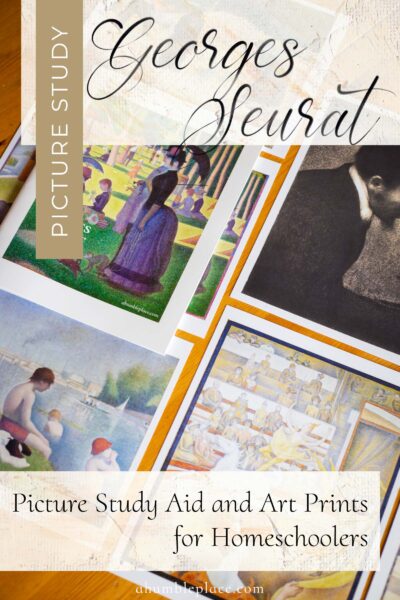
To read more about Charlotte Mason picture study and to see the other Picture Study Aids I offer, click here.
The inability of some critics to connect the dots doesn’t make pointillism pointless.Georges Seurat
The 19th century was a time of artistic revolution. The Impressionists reacted against earlier movements dramatically, almost to a point that had never been seen before. And as later generations react to earlier generations, Impressionism also had its “wayward children.” When the novelty of painting the world in light and color rather than form began to wear away, French artist Georges Seurat arrived on the scene with his Neo-Impressionistic dots. He gave the world Pointillism.
Ironically, even within the more avant-garde art community, his art was an enigma. After his Bathers at Asnières was rejected by the official Salon of 1884, it was accepted by the Salon des Indépendants, but relegated to display near the canteen. Most members of the art world didn’t quite know what to make of his dots. Fortunately, later artists like Paul Signac, Camille Pissarro, and Vincent van Gogh, saw beauty in his work, and it led to even more additions to the world of art through their hands.
What I learned while writing this Picture Study Aid was that his mind was more scientific than artistic (he is credited with saying, “They see poetry in what I have done. No. I apply my methods, and that is all there is to it.”). He saw the world in combinations of color and, after studying more traditional forms of art at the École des Beaux-Arts, he was fascinated by the newer writings about color theory that were coming out at the time detailing how the brain uses “optical mixing” to blend colors, and even make them appear more brilliant. His use of color attests to his deep fascination with what he learned
During his very short life, he explored these ideas and theories to an infinitesimal degree through his painting technique…..literally. He made many studies, or small panel “oil sketches” of his subjects, including his most famous painting, A Sunday on La Grande Jatte — 1884, before working on the final canvas.
What I like about Seurat’s techniques, his conté crayon drawings, and his paintings beyond his magnum opus – A Sunday on La Grande Jatte — 1884 – is their calmness. As I was looking at painting after painting of beaches and grassy knolls and boats and trees and individual figures placidly going about their days (often along the River Seine), even, to a certain extent, in the circus paintings, everything just felt calm. And in our world of chaos, calm feels good.
Georges Seurat Picture Study Aid
I’m happy to announce that I am now offering a Picture Study Aid and art prints covering the art of Georges Seurat in both download and print form (I also have a free version that follows the AmblesideOnline artist study selections which you can read more about at the end of the post)! Included in this 27-page Picture Study Aid is a summary of the early life and artistic inspirations of French, Post-Impressionist painter Georges Seurat (1859-1891), key topics for seven of his works (see below), printable versions of the pieces covered in the PDF version, and a brief discussion about Charlotte Mason’s ideas and methods for implementing picture study at different ages.
The pieces discussed are:
- The Stone Breakers, Le Raincy (ca. 1882 – Norton Simon Museum, Pasadena, California)
- Aman-Jean (Portrait of Edmond François Aman-Jean) (1882-1883 – Metropolitan Museum of Art, New York City)
- Bathers at Asnières (1884 – National Gallery, London)
- A Sunday on La Grande Jatte — 1884 (or A Sunday Afternoon on the Island of La Grande Jatte 1884-1886 – Art Institute of Chicago, Illinois)
- Seascape at Port-en-Bessin, Normandy (1888 – National Gallery of Art, Washington D.C.)
- Port-en-Bessin (1888 – Minneapolis Institute of Art, Minneapolis, Minnesota)
- The Circus (1891 – Musée d’Orsay, Paris)
You can also find books for further reading about Georges Seurat in the Living Art Book Archive.
I include a brief overview of Charlotte Mason picture study at the beginning of the file; however, I have also written posts here on the blog about why it is important and how we do it in our home and homeschool co-op.
You can get your copy at the link at the end of the post!

Caveats
This guide is by no means an exhaustive analysis or study of each piece, which is intentional. I tried to keep it all very simple in the spirit of there being:
…no talk about schools of painting, little about style; consideration of these matters comes in later life, the first and most important thing is to know the pictures themselves. As in a worthy book we leave the author to tell his own tale, so do we trust a picture to tell its tale through the medium the artist gave it. In the region of art as else-where we shut out the middleman.
CHARLOTTE MASON (VOL 6 PG 216)
Instead, this Picture Study Aid is meant to offer basic information about the artists as well as ready answers should your student ask about a particular aspect of a piece and the explanation isn’t readily evident. Ms. Mason emphasized not focusing on strict academic discourse when doing picture study but rather simply exposing students to the art itself:
His education should furnish him with whole galleries of mental pictures, pictures by great artists old and new;––…––in fact, every child should leave school with at least a couple of hundred pictures by great masters hanging permanently in the halls of his imagination, to say nothing of great buildings, sculpture, beauty of form and colour in things he sees. Perhaps we might secure at least a hundred lovely landscapes too,––sunsets, cloudscapes, starlight nights. At any rate he should go forth well furnished because imagination has the property of magical expansion, the more it holds the more it will hold.
CHARLOTTE MASON (VOL 6 PG 43)


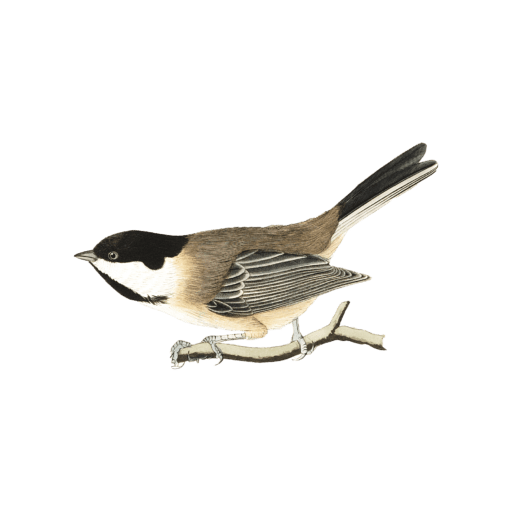


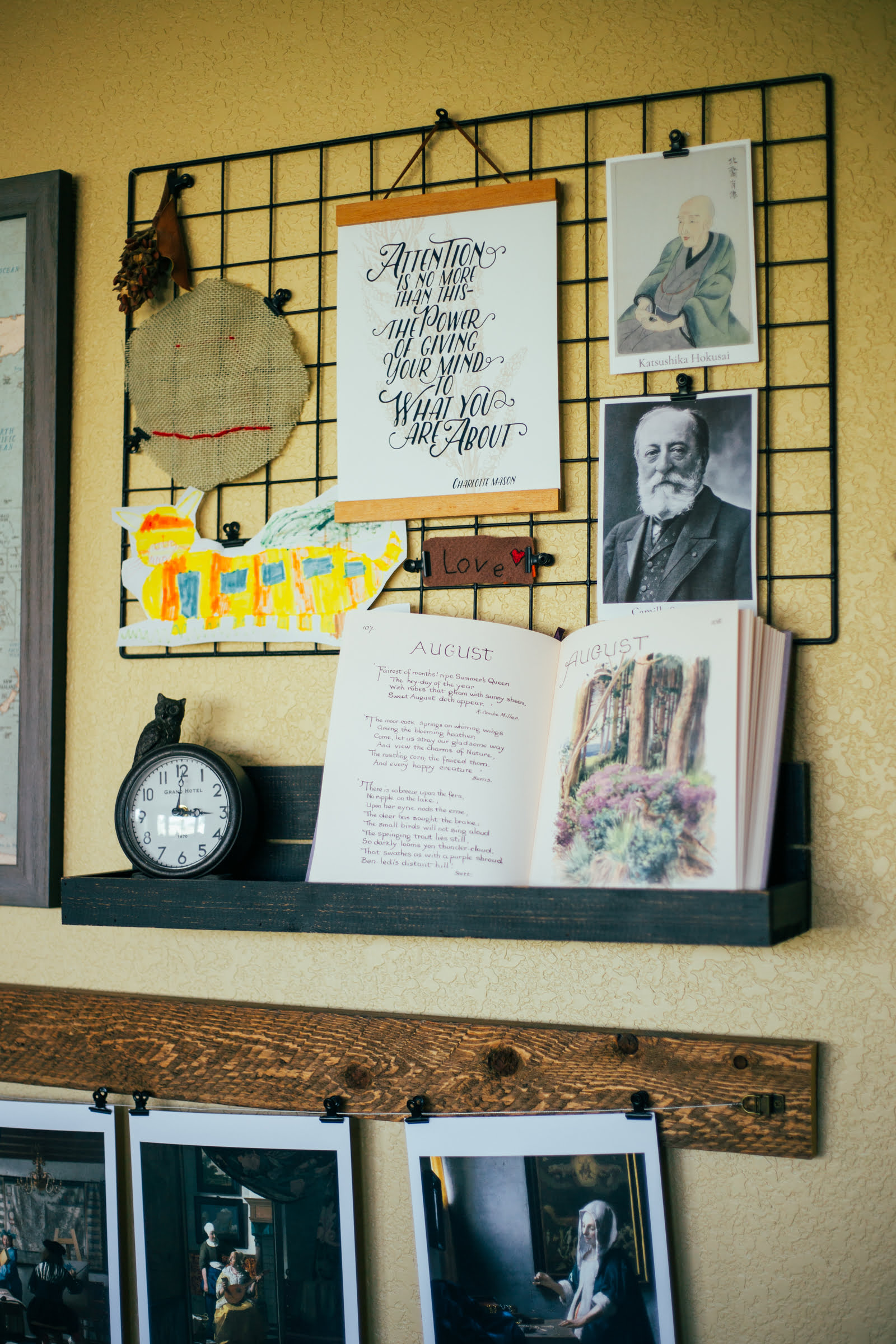
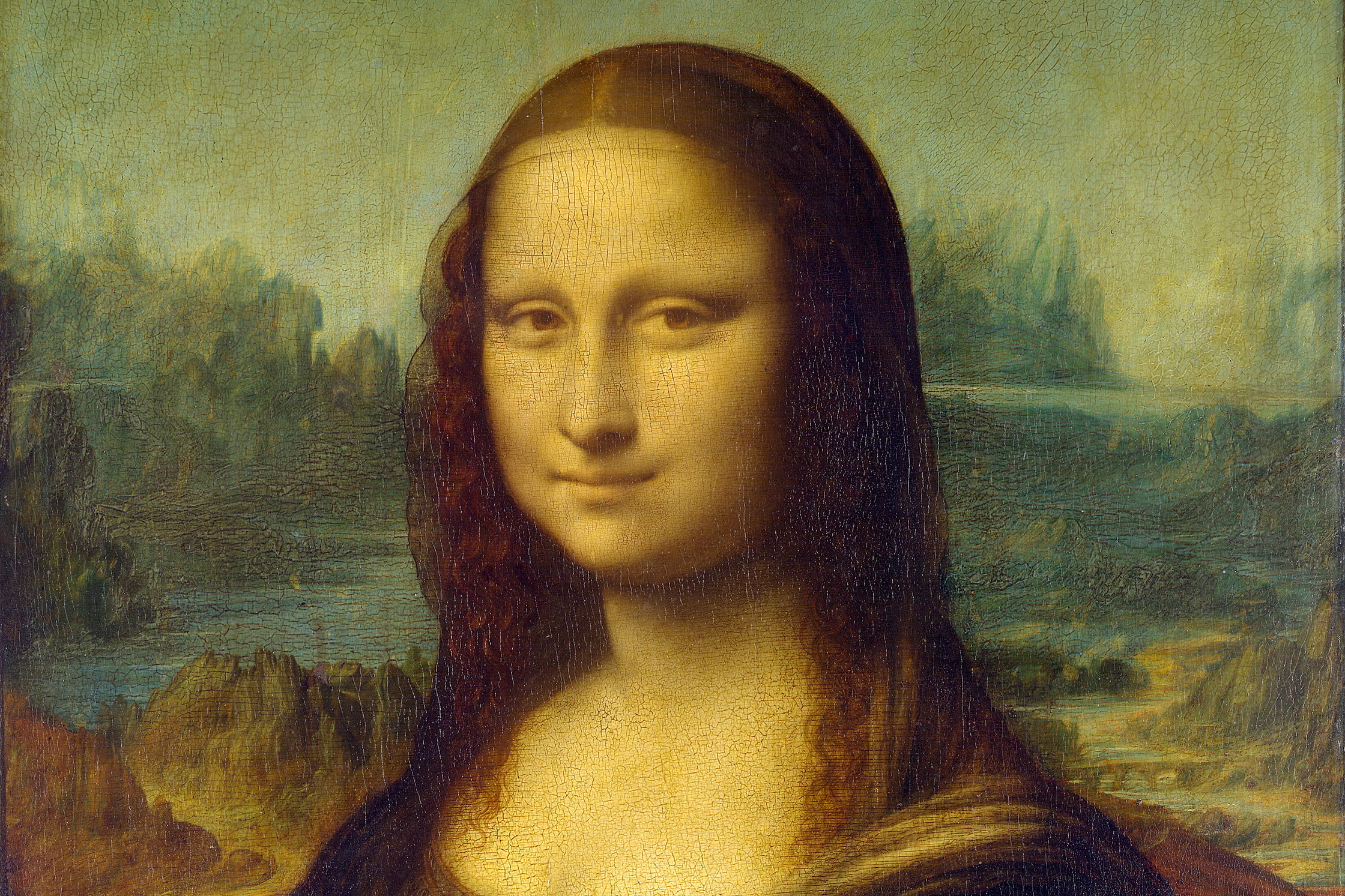
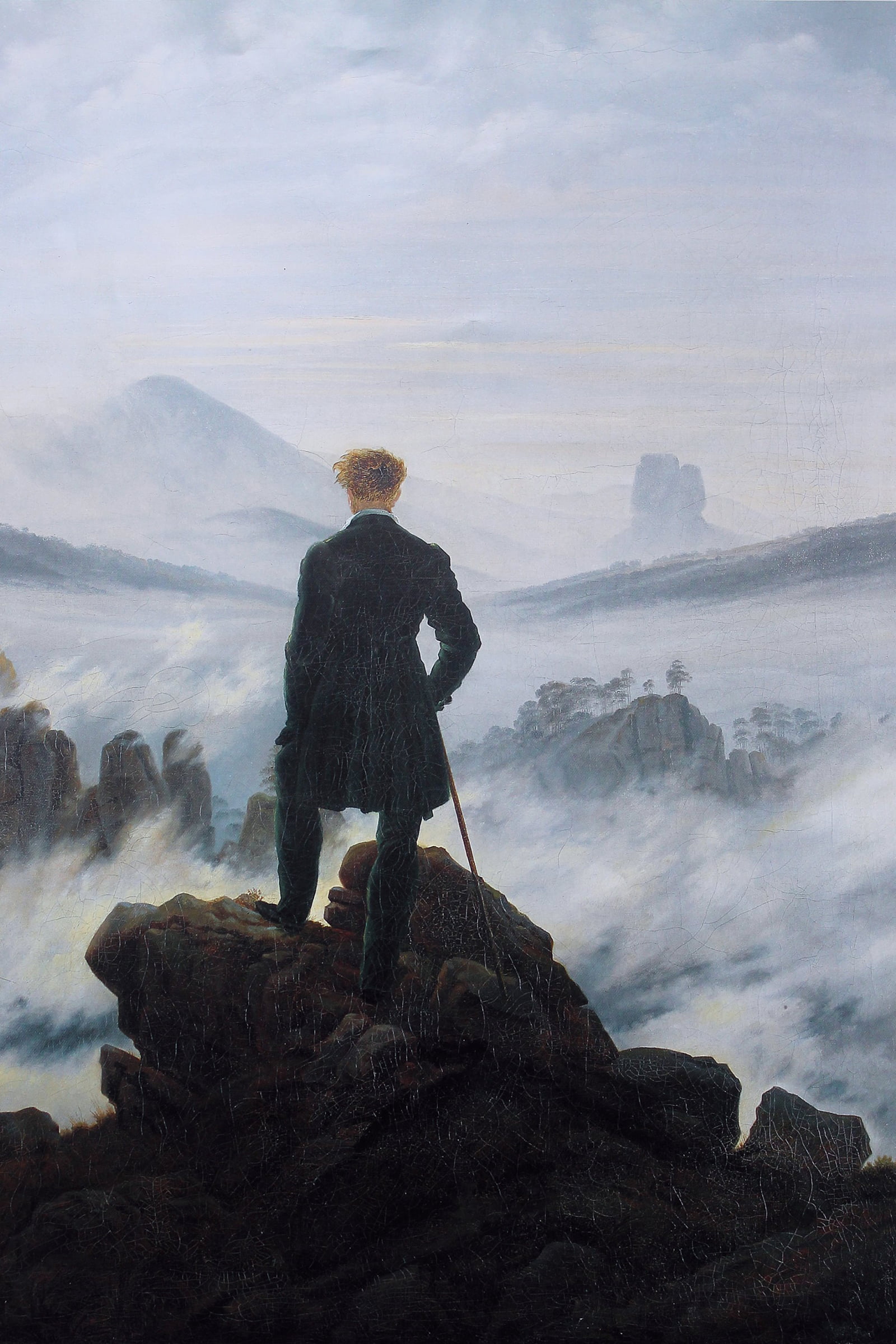

I really like your thoughtful article and the quotes, especially the one by Miss Mason regarding keeping art talks simple and “shut out the middle man” who, in my opinion is just trying to look important with words, when art is a gift from on high, simply to be enjoyed. We don’t analyze God’s ever changing landscape and yet it is more beautiful than anything on canvas.
On another note, do you happen to have art prints especially for kindergarten?
I don’t have a specific artist recommendation for kindergarten, but in my Charlotte Mason-Inspired Kindergarten Curriculum, I schedule Henry Ossawa Tanner (https://ahumbleplace.com/product/tanner-picture-study/), Vincent van Gogh (https://ahumbleplace.com/product/van-gogh-picture-study/), and Johannes Vermeer (https://ahumbleplace.com/product/vermeer-picture-study/).